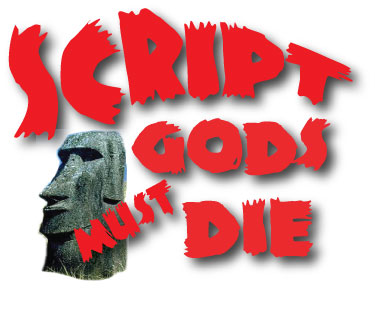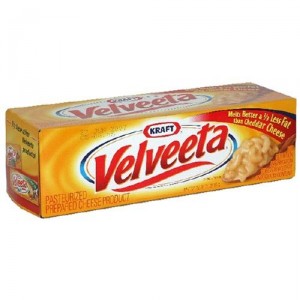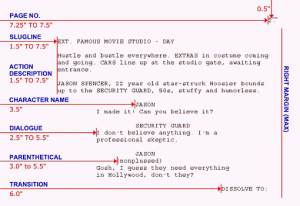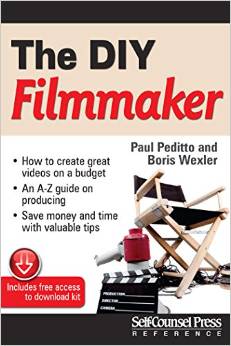Recently at a Meetup.com group here in Chicago, I was asked to give a down and dirty format lecture in about 55 minutes. Lightning round stuff, I barely had enough caffeine in my system to make it through.
Concerning format, the first three words out of my mouth are The Screenwriter’s Bible, by Dave Trottier. How the hell y’gonna beat it? I thought I knew everything there was to know about the subject but Dave’s has some chapters in there I never even conceived (how do you write sci-fi telepathic dialogue, for instance?) After this there are multiple resources online I like including johnaugust.com.
Not completely against self-promotion, early on here at SCRIPT GODS I had about 15 or so posts on format, which can be found easily scrolling to the posts of January through May 2010.
This post is a recap of the Meetup.com lecture. I’ll include links to the previous format lectures. Hope it helps.
- FORMATTING, THE NOT SO SEXY SCIENCE
Format isn’t sexy. Your story needs to be original, not the formatting. Format is, almost by definition, conformity. Screenplays need to look a certain way, run a certain number of pages, and obey basic rules that the powers-that-be want obeyed. Why would you want to mess with format and piss off the powers-that-be? Anger them at your peril. For me, the true battle with format is the keep technical jargon to a minimum. You want the reader see your movie, not labor through reading a script.
- ACTION LINE BASICS
If your action lines go past five lines you’re being a pain in the ass. I know, you can go to Drew’s Script O Rama right now and find a dozen scripts where writers routinely go beyond five lines per paragraph. I ask you to use common sense. See through the reader’s eyes. Would you rather read a 90 page script with lean, mean description of two or three lines per scene, or 117 pages of endless blocks of Velveeta cheese description that begs the tired eyes of the reader to SKIP IT. And believe me, they will…skip it. They are looking for any excuse to pass on your project. Your Velveeta blocks are the justification.Where the camera naturally cuts, give white space, go to the next paragraph.
Try to keep your description tight. Don’t try to be the production designer and describe every piece of furniture in a Starbucks as a character rolls through for a coffee. I DON’T CARE! Caution too, along with unnecessary detail, is doing the director’s job by including any sort of shot detail. Not your job. While you’re at it, skip the parentheticals. It’s not your responsibility to give the actors line readings. Just get to the story.
Characters get CAPPED the first time we see them. If it’s the protagonist or key secondary character, give short descriptions. Go past JIM, 34, wears jeans…anybody can write that. You have to do better, go further. Get to the visual essence of the character, like this one from BAD SANTA:
A wiry, hard-bitten, sun-baked saddlebag of a man, GIN SLAGEL sits behind his cluttered desk sucking on a filterless Pall Mall. We can hear his in-taken breath rattling over and around the phlegm, growths, and polyps that line his embattled trachea. His words come out on an exhaled cloud chamber’s worth of smoke:
GIN
Fuck stick?
- MONTAGE VS. SERIES OF SHOTS
The difference is subtle. Series of shots plays out over a shorter period of time. Montage can play out over a long night, or over a full lifetime. Either can go in parenthesis beside the slugline, like this:
INT. PLAZA HOTEL- NIGHT- (MONTAGE)
Freddy Mac and Fanny Mae sip Maine lobster bisque with Merrill Lynch bigwigs.
They munch Free Range Organic Chicken with Bank of American honchos.
They slurp Nutella crepes with Citibank VP’s.
Or on a separate action, like this:
MONTAGE--FREDDY MAC AND FANNY MAE PARTY IN THE BIG APPLE
--Freddy Mac and Fanny Mae sip Maine lobster bisque with Merrill Lynch bigwigs.
--They munch Free Range Organic Chicken with Bank of American honchos.
--They slurp Nutella dessert crepes with Citibank VP’s.
- INTERCUTS & CROSSCUTTING
You don’t want constant sluglines. It’s part of the technical scriptwriting that you want to minimize. Cut out the technical jargon to the best of your ability by using devices like Intercuts and Crosscutting. Here’s how a telephone conversation would look…establish both locations, then use INTERCUT:
INT. PAULY VEGAS HOME- NIGHT
Pauly watches the tube. Picks up the phone and dials.
INT. TOMMY VEGAS HOME- SAME
Tommy about to dig into a cannoli, Tommy picks up the phone.
INT.ERCUT--BOTH HOMES
TOMMY
Yo.
PAULY
Yo.
TOMMY
‘Sup?
PAULY
Whachadoin’?
TOMMY
Eating that cannoli.
PAULY
From Mom?
TOMMY
Yeah.
PAULY
How is it?
TOMMY
I don’t know, I’m on the phone doin’ the Sopranos with you answering a bunch of stupid questions.
PAULY
Oooh, eeey! Easy!
INT. FEDERAL LOCKUP -- STAIRWELL -- DAY
Kimble descending. Doors open and close throughout the stairwell but the traffic is light...
INTERCUT WITH... GERARD -- Climbing the stairs. He reaches a landing -- and skims shoulders with Kimble, who pivots past on his way down.
Amazingly, neither man reacts. Not yet.
One flight above, Gerard’s subconscious taps him on the shoulder and brings him to a dead stop. He leans over the stairwell railing to spy... Kimble spiraling downward. From this vantage, it could be any dark-haired man. But still...
GERARD
Kimble.
Others look up out of curiosity... but not Kimble. Two landings below, he falters a step, then tries to regain his step, keeps moving.
But Gerard is pulling his Glock: The hitch in Kimble’s stride told him everything.
GERARD
Kimble!
Kimble blitzes down the stairs. Gerard moves after him.
- MISCELLANEA
Final Draft or Movie Magic are industry standard software. Celtx.com has a free version of Final Draft, buggy but usable. Word is unacceptable.
Cover Pages have TITLE by YOU and CONTACT INFO below. They do not have WGA registration number and should probably not have your home phone number. No cover art, no fancy fonts, bound by two brads top and bottom of three-hole punch paper.
Final Draft software pull down menu has a couple options I never use: GENERAL and SHOT. It has TRANSITION, which I rarely use (the FADES, but never CUT TO). You will use the SCENE HEADING, CHARACTER, ACTION and DIALOGUE almost exclusively. Even then, eventually you’ll use it like Word in the sense of tabbing to the exact spot on the page where the software automatically puts it. Notice I left out PARENTHETICAL. I wish you would too.
Every scene begins with a SCENE HEADING, also called a SLUG LINE. This is three parts: INT. or EXT. (Interior or Exterior). Then the location: BAR, CAR, HIGHWAY, APARTMENT. Then the time: DAY, NIGHT, LATER, SAME, CONTINUOUS always worked best for me. So it would look like: INT. BAR- NIGHT or EXT. HIGHWAY- CONTINUOUS.
Use ellipses and dashes. Three dots = pause. Two dashes = interuption. Why use a parenthetical (pause) or (beat) or (interuption) when you don’t have to?
Don’t write in specific songs unless you can pay for them. It’s not Muddy Waters plays on the jukebox, it’s BLUES MUSIC.
Use O.S. when a character is in the room but the camera isn’t on them. Use V.O. when the character isn’t there.
Foreign languages should be done in the action paragraph: In Mandarin, with English subtitles. Then roll the dialogue in English.
Ideal Screenplay length: Drama: 90-110 pages. Comedy: 90-100 pages.
- LASTLY
I occasionally hear it from 19 year-olds in the hallways of Columbia: “I’m good with format, I’ve got Final Draft.” Sorry to tell ya, but uh-uh, wrong. You having screenwriting software doesn’t mean you’ve got formatting down any more than buying the Avid system makes you an editor or buying a 16-wheeler makes you a trucker. You’ve got to learn the craft.
Don’t let a reader ignore the four months you took to write a killer story because you didn’t know how to format. Get to work, get it down, then move on to the bigger battle of story.
